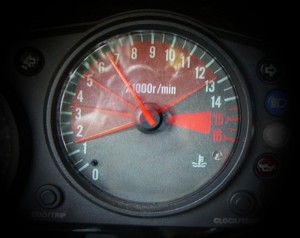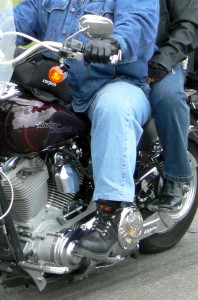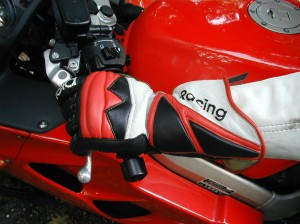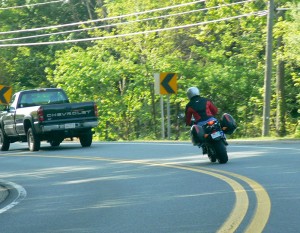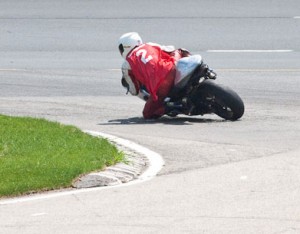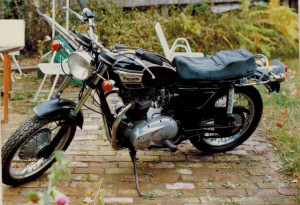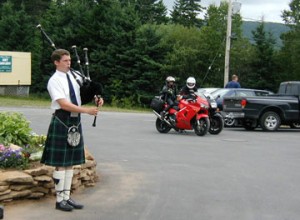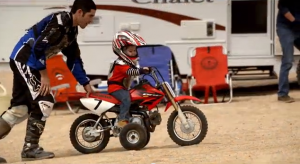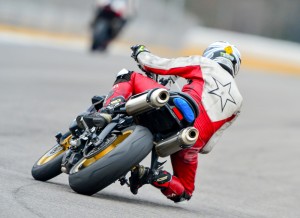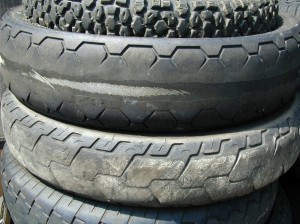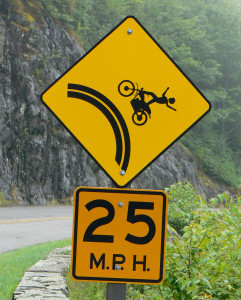 No matter how “good” a rider you are, it’s likely that you have at least a few bad habits and attitudes. Poor habits and dangerous perceptions can develop over time without us even knowing it. That is, until we experience a close call or crash. Let’s take a look at a few bad habits that many riders possess.
No matter how “good” a rider you are, it’s likely that you have at least a few bad habits and attitudes. Poor habits and dangerous perceptions can develop over time without us even knowing it. That is, until we experience a close call or crash. Let’s take a look at a few bad habits that many riders possess.
1. Believing You’re a Better Rider than you Are
A lot of RITZ blog readers would be considered “experienced” riders. But, the truth is that experience alone does not make you a proficient rider. I can’t begin to count how many so-called experienced riders I’ve encountered who demonstrate a significant lack of proficiency. Unfortunately, unless the rider admits that he or she has a problem and asks for advice, their poor riding will continue indefinitely and ultimately lead to a mishap.
Unsolicited advice usually is not appreciated, so knowledgeable riders are reluctant to share their wisdom to the riders who need it most. Attempts to enlighten the problem rider often results in exclamations about how many years of riding experience they have and that they know all they need to know to get by…never really knowing the danger they are in.
The solution? First, take a good look in the mirror. What skills are you lacking? (I’m sure there are many, but let’s stick with motorcycle-related skills for now). Next, get the knowledge and training you need to bring all of your skills up to snuff. Thirdly, remind yourself that what skills you have are perishable and need to be kept fresh.
Promise yourself that you will purposefully practice braking, turning, and swerving. It doesn’t have to take a lot of effort to keep skills sharp. Learn about proper cornering technique and then practice it on your Sunday rides. And be sure to learn about all the ways to keep yourself safe in traffic and practice on your way to work every day. Over time, you just might become as good as you think you are.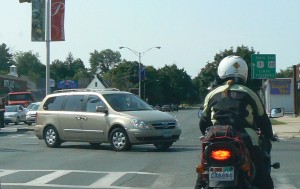
2. Forgetting You Are Vulnerable
Experience can often lead to complacency. If you ride many miles without an incident, you are at risk of thinking that riding a motorcycle is not as dangerous as it’s made out to be. This perception leads to many crashes and fatalities. Complacency and overconfidence can occur when you don’t recognize subtle signals that indicate just how close you are to catastrophe.
Get into the habit of recognizing clues that should alert you to threats. Make a concerted effort to scan the landscape and roadway for anything that can turn into a hazard, such as a reflection on the windshield of a car that is rolling toward you. Ask yourself whether the driver sees you and what are the chances that he will accelerate in front of you.
Evaluate each clue to determine whether you can reliably read what is being communicated. For instance, direct eye contact with the driver may indicate that the he sees you, but don’t count on it!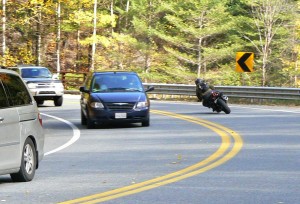
3. Assuming the Coast is Clear
You know what they say about making assumptions, right? “They make an ASS out of U and ME”.
One of the most problematic situations is when a motorcycle is approaching an intersection with other drivers waiting to turn left across the rider’s lane. Part of the problem is that the approach speed of a narrow vehicle is much harder to judge compared to a wide vehicle. This is why motorcyclists experience drivers “cutting them off”.
The drivers aren’t necessarily out to get you; they more likely misjudged your approach speed and thought that they had plenty of time to make the turn. The message is to never assume that a driver who appears to see you will not cut in front of you. See “The Top 2 Survival Tips That Will Save Your Life” for more on this topic.
A lot of riders also assume the coast is clear around corners. Depending on the region you ride in, many, or even most corners you encounter do not provide a clear view of the corner exit. Hillsides, vegetation and roadside structures all conspire to block your vision.
Too many riders approach corners at a speed that does not allow the time and space to stop or maneuver if a mid-corner hazard were present. It’s a good idea to enter blind turns slow enough so you can confidently avoid a hidden hazard. If no hazard exists, then you can roll on the throttle and accelerate safely though the turn with no drama.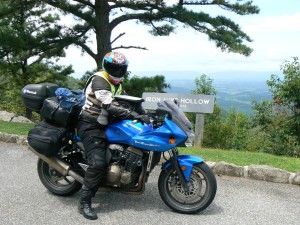

4. Not Wearing ATGATT
ATGATT is an acronym that stands for “All The Gear, All The Time”. MY definition of “All the gear” means helmet, appropriate eye protection, jacket and pants with protective armor, gloves, and over-the-ankle boots. The obvious reason for buying and wearing all this gear is for protection in the event of a crash. Since motorcycle riders don’t have bumpers, airbags, crumple zones and safety glass surrounding us, we must wear our protection.
Unfortunately, way too many motorcyclists choose not to wear full protective gear. In states where helmet laws are enforced, riders are compelled to wear this most important piece of protective gear, but helmet choice states leave the option of helmet use to the rider. Whether you agree with helmet laws or not, it’s hard to dispute the benefits of having a helmet strapped to your head when you and your bike separate at speed.
Currently, no states require any other protective gear to be worn, with the exception of eye protection. This means that you can ride legally in a tank top, shorts and sandals. Good luck with that.
The reasons why riders do not wear protective gear often include image, peer pressure (you gotta look cool), and cost. But, there is plenty of inexpensive protective gear that meet most rider’s fashion sensibilities while providing decent protection (at least for a single crash).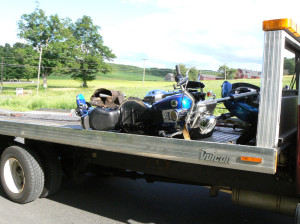
5. Being an Idiot
This topic can cover a lot of ground, but let’s focus on your attitude when you ride. This pretty much means riding with your head securely screwed onto your neck. Letting destructive influences like ego, peer pressure, intoxication, and distraction make decisions for you will eventually lead to a hospital visit. So, just say no to stupidity. ’nuff said.
What would you add to this list of bad habits?

Please Donate to Keep the Articles Coming
If you liked this article and the many other articles on this site, please toss a buck or five into the hat. It’s greatly appreciated!
- Click the PayPal “Pay Now” button.
- Then indicate quantity in $2.00 increments. – Example: put “2” in “QUANTITY” field to donate $4.00, “3” for a $6.00 donation, etc.
Why $2.00? Due to the PayPal fee structure, a $2.00 donation is significantly more beneficial compared to a $1.00 donation.
Thank You!
Check out these posts:
- Product Review: TCX X-Desert Boots
- Get Anxiety & Stress Under Control (Motorcyclist)
- KLX250s Upgraded and Accessorized
- Street Triple R Gets Accessorized
- Triumph Street Triple R Review
- How To Survive Mid-Corner Hazards
- #1 Reason for Motorcycle Crashes in Corners











